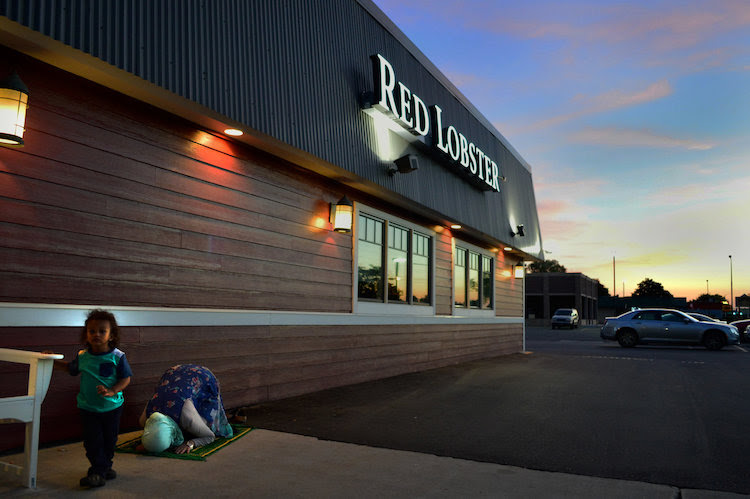Yes, Detroit’s a ‘Halal Metropolis’ — and it has been for a century
At Target earlier this month, you could buy Happy Eid cards. Party City was hawking Ramadan decorations. In Whole Foods and Kroger, signage advertised directly to Muslim shoppers. That’s the lively “halal marketplace†at work, Razi Jafri said, describing commerce as just one piece of the larger “halal metropolis.â€
“The halal metropolis is just a place where people can freely practice their religion†and where Muslims are accepted and accommodated, said Jafri, a Detroit-based documentarian. “Halal Metropolis†is also the name he and his co-organizers gave to a sweeping series of art exhibitions and community events that kick off this Friday in Detroit.
Jafri, along with Osman Khan, artist and University of Michigan associate professor, and Sally Howell, University of Michigan-Dearborn Arab American history professor, curated the “Halal Metropolis†project and the first show at the Indus Detroit gallery and residency space in the Dexter-Linwood neighborhood.
In six upcoming shows around southeast Michigan, held intermittently through 2020, different Muslim artists examine the nature of Muslim visibility in the region and wider American society — beyond the mosque.

They’ll explore the theme through different aspects of culture, including architecture, design, fashion and food. The series will also take on less celebratory types of visibility, examining how Islamophobia has perpetuated destructive images of Muslims. Recent incidents of discrimination compelled “Halal Metropolis†organizers to seek out venues in communities where anti-Muslim tensions have simmered — so they’ll be putting up shows and holding public discussions in Howell and Mt. Clemens, aiming to build bridges with residents.
With a focus on history, the inaugural Detroit show sets the context for the larger series. Before attendees get to the contemporary artists’ work, they’ll walk through an entire floor of curated archival material that establishes “the when and where Muslims start appearing in the cultural consciousness of the local community,†with particular attention to African American Muslims, Jafri explained. That started happening in the 1910s to 1930s in Detroit, he said.

“Halal Metropolis†aims to present a layered, multi-faceted image of Islam in the U.S. For Muslim viewers, it might give them a deeper awareness of how their culture is rooted in America’s story, back to the country’s founding. For those less familiar with Islam, Jafri hopes they’ll see that its diverse and multiethnic practitioners don’t fit into one simple stereotype.
“Muslims are very Arabized through a non-Muslim gaze, and so when people think of who Muslims are they tend to think of them as Arab, brown immigrants from overseas,†Jafri said. He used the example of food — Middle Eastern dishes like shawarma are most identified with Muslims, but halal burgers or soul food are just as culturally relevant.
“There’s this perception somehow that Muslims showed up 10, 15, 20 years ago and are all immigrants, when in fact, when you look at the statistics, the vast majority of Muslims are not immigrants,†Jafri said.
“In this contemporary period, as Muslims are seen as among the most toxic communities in the United States, it’s really, really important for people outside of the community to understand this history.â€
The first “Halal Metropolis†exhibit opens Friday, June 21, 6 p.m. at Indus Detroit, and runs through July 31. –Kate Abbey-Lambertz


NO COMMENT